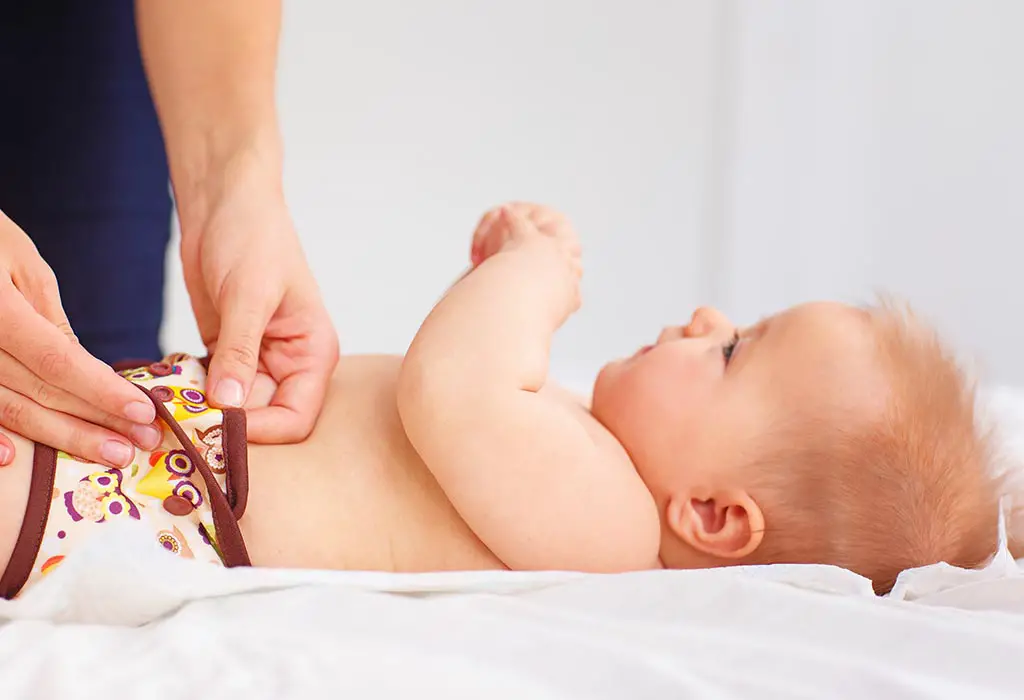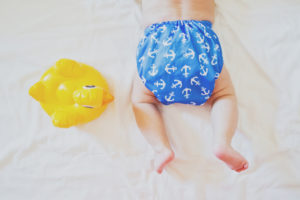Using reusable Laundering Cloth Diapers means that you’ll be dealing with some extra laundry almost every single day.
It’s definitely not going to be pleasant but the thought of not exposing your child to the chemicals in disposable diapers and keeping the environment safe makes the extra washing totally worth it.
Laundering cloth diapers is an easy task. You just need to follow this simple routine that works great for many parents.
5 Main Factors that Work Together when Cleaning Cloth Diapers:

Water:
Water does a good portion of your cloth diaper cleaning. It especially plays a crucial role in cleaning hemp and cotton.
For poor-quality water, you may need to make some adjustments.
Chemicals:
The cleaning agents or chemicals in detergents (even natural ones) play an important role when it comes to cleaning artificial materials which tend to be oil-loving and thus bond with the fats and oils in human waste
Agitation:
Agitation is the mechanical action in a washing machine where the pieces of clothing rub together, an action that simulates hand scrubbing.
Together with the action of detergent, agitation helps lift any dirt
Time:
The soaking time and length of cleaning cycles also affect cleaning.
Heat:
Although most home washing machines can’t get the water hot enough to kill the bacteria and other harmful organisms in the dirty cloth diapers, higher temperatures actually help other components work more efficiently, which can in turn help speed up the cleaning process
Please keep in mind that if you remove a single factor in this formula, for example, using cold instead of hot water or no chemicals, it is advisable that you increase other factors to ensure your cloth diapers are properly cleaned.
How to Launder Cloth Diapers (A Step-by-Step Guide):
1. Dump the Solid Waste into the Toilet:
The first step is dumping the solid waste into the toilet. This mainly applies to formula or solid-fed baby waste.
Exclusively breastfed baby waste is completely water-soluble and can thus be removed during the initial rinse cycle.
2. Place the Diapers in a Dry Bucket Until Washing Time:
For safety reasons, avoid placing the soiled cloth diapers into a pail with water in it if you have toddlers in the hours.
It’s not very safe. But if there are no toddlers who may fall in the bucket or tip the pail over, it’s perfectly okay to soak them until wash time.
This can help improve the effectiveness of the next steps.
3. Rinse the Diapers in Warm Water in the Washing Machine:
Once you’ve collected enough soiled diapers for a full load in your laundry machine (without overloading it), put them into the washer and run it.
Most people find washing every 2-3 days is ideal and can wash around 12-24 diapers at a time.
It’s recommended to start out by rinsing the diapers in either a warm rinse cycle or cold soak.
A hot water cycle will most likely cause the stains to set in, so it’s not recommended as the first step.
Waste is easiest to remove around body temperature, which typically is similar to the “warm” setting on standard washing machines.
Once the rinse cycle is complete, you can leave them to soak for as long as you want (even overnight) or you can set the wash cycle immediately after rinsing.
Do what you feel will work best for you.
4. Wash the Diapers with Detergent & Hot Water in the Washing Machine:
Next, wash the diapers in hot water in the washing machine. Hot water not only helps remove stains easily with the help of detergent – but it also kills any harmful organisms.
Add the detergent first, but make sure you only add about ½ or ¼ of the recommended amount.
This will prevent the buildup of detergent residue which can irritate your baby’s skin, shorten the lifespan of the diapers, reduce their absorbency, and even have a strong unpleasant detergent fragrance.
Make sure that the detergent you’re using is free from fragrance, color-free, and without any fabric softeners or optical brighteners.
If using hard water, be sure to use a little bit more detergent as hard water does not form lather easily.
And of course, make sure you’re using the right amount of washing detergent. Make sure not too little or too much.
5. Rinse the Diapers Twice in Warm Water in the Washing Machine:
Rinse the diapers in warm water twice. Most wash cycles usually end up with a rinse, but you can set the washer for an extra rinse.
The extra rinse is especially important for ensuring heavier materials like cotton or hemp are properly rinsed and that no residue is left behind.
6. Dry the Diapers in the Sun or Clothes Dryer:
After the diaper cleaning process is done, it’s now time to dry them. You can either dry them under direct sunlight or use an automatic dryer.
Drying in the sun will help you save on energy bills compared to using a dryer, not to mention the sun will help fade any stains.
If using a dryer, use the lowest temperature setting as excessive heat may damage and even reduce the life of the diapers.
Extra Tips:
- Different cloth diapers come in different types of materials. For best results when washing cloth diapers, consider separating the fabrics.
- For hydrophilic fabrics such as cotton and hemp, use more water and also rinse at least twice
- For diapers made from oleophilic fibers such as manufactured or artificial materials, be sure to use more detergent as they are oil-loving.
- This will help break the bonds with the oils and fats in human waste
- Cloth diapers made from Bamboo (rayon) clean best in neutral pH levels. Thus, make sure you’re only the best quality water, not salty or water that has been contaminated with any chemicals. Using liquid detergents may also help a great deal.
- In case you’re having issues cleaning your cloth diapers, consider getting in touch with the manufacturer.
- They may offer some insightful tips on how to make the process easier for you.
Frequently Asked Questions:

As a mother of four very energetic children, Emilia knows how chaotic motherhood can be. She’s learned a lot of lessons along the journey so far and loves sharing the tips & tricks she’s picked up over the years with anybody else on the same life path.

